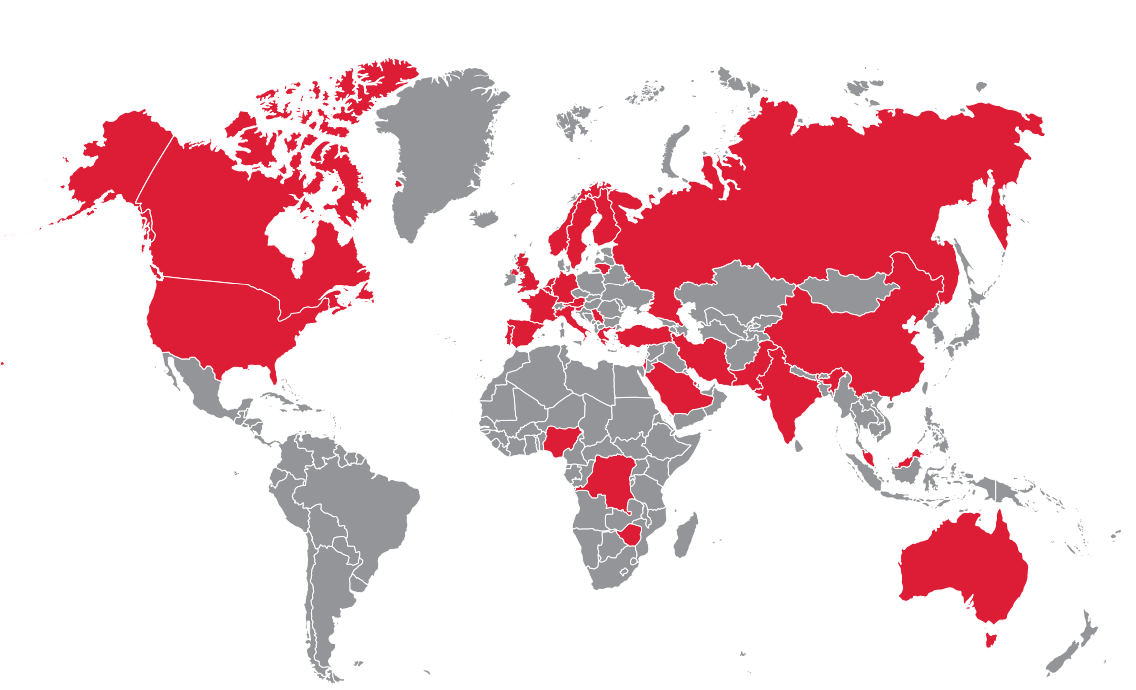
Global Trends and Differences in Body Armor Regulations and Standards
Aug 01, 2024
Body armor is an essential safety tool for law enforcement and security personnel worldwide. However, the regulations and standards governing its use and quality can vary significantly from one country to another. This variability can affect everything from the design and manufacturing of body armor to its effectiveness and availability on the global market. This blog post delves into the international landscape of body armor regulations and standards, offering insights into how these differences shape the industry.
Overview of Regulations
Globally, the regulation of body armor is predominantly determined by national standards, which set the minimum requirements for ballistic resistance, materials, and performance under various conditions. In the United States, the National Institute of Justice (NIJ) sets widely recognized standards that many other countries either adopt or reference in their regulations. The NIJ standard is comprehensive, categorizing body armor into levels that specify the type of protection against different ballistic threats, from handguns to high-caliber rifles.
Similarly, the European Union has established EN standards (like EN 1063 for bullet-resistant glass and EN 1522/1523 for body armor panels). These standards are applicable within the EU and influential in shaping standards in neighboring regions and countries looking to export to the European market.
Country-Specific Regulations
The specifics of body armor regulations can vary widely across the globe. For example, in Canada, the standards closely mirror those of the NIJ, reflecting North America's integrated defense and security industries. However, in Asia, countries like Japan have unique standards less aligned with Western benchmarks, focusing more on the types of threats commonly encountered in the region, such as knife attacks rather than firearms.
In contrast, countries in the Middle East and Africa may have less stringent or formalized standards, often due to varying threat levels, economic constraints, and governmental oversight. This can lead to disparities in the quality and effectiveness of body armor available in these regions.
Impact on Manufacturers and End Users
These varying standards significantly impact body armor manufacturers. Companies must navigate a complex landscape of international regulations to distribute their products globally. This often requires extensive testing and certification processes that can be both time-consuming and costly. Manufacturers may need to produce multiple versions of the same product to meet different international standards or opt to specialize in specific markets.
These differences in regulations can influence the type of body armor available to end users. In regions with stringent standards, law enforcement and security personnel are likely to have access to high-quality, tested, and certified products. However, in countries with less formalized or lower standards, users may face risks from inferior protective gear, potentially compromising their safety in critical situations.
Future Directions
The future of global body armor standards seems poised for gradual convergence, particularly as international cooperation and alliances in law enforcement and security increase. Technological advances, such as new synthetic materials and smart textiles that can offer enhanced protection while improving comfort will likely push older standards to evolve.
Furthermore, there is growing advocacy for universal minimum standards to help ensure safety worldwide. This movement might gain momentum as international bodies like the United Nations seek to enhance law enforcement and security personnel protections globally.
Understanding the global landscape of body armor regulations and standards is crucial for manufacturers, policymakers, and end users. As the world becomes more interconnected, harmonizing these standards could lead to better, more consistent protection for those on the front lines of law enforcement and security. Navigating this complex field requires diligence, knowledge, and a proactive approach to ensure safety and compliance in a diverse and changing world.
Stay Ahead with Custom Armor Group
Navigating the complex landscape of global body armor standards can be daunting. With differing regulations across countries, ensuring that your law enforcement or security team has the highest-quality and most compliant body armor is crucial. This is where Custom Armor Group (CAG) steps in.
At CAG, we specialize in manufacturing top-tier body armor that meets various international standards, including NIJ, EN, and more. Whether you're in North America, Europe, or anywhere else, our products are designed to offer superior protection that meets your local compliance requirements. Don’t let regulatory complexities compromise your safety.
Contact Custom Armor Group today to find out how our tailored solutions can meet your specific needs. Visit our website at www.customarmorgroup.com or call us to discuss your body armor requirements and stay protected, no matter where your duties take you.

